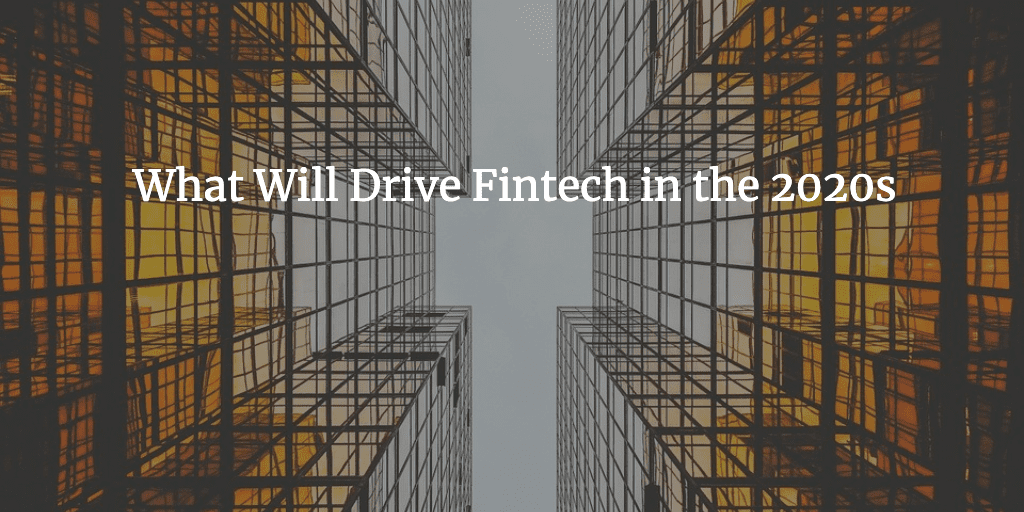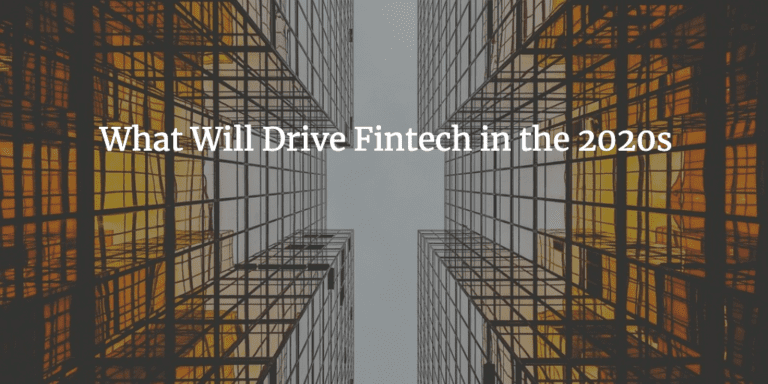
[Editor’s Note: This is a guest post from Victor Santos, founder of Boston mobile banking startup Airfox. His company is accelerating financial inclusion for all with an innovative, mobile-first financial services model that increases access to capital and banking services. Connect with him on Twitter.]
You could debate what should appear on the shortlist of the game-changing innovations of the last decade: 4G rollout and mobile streaming? Apps for everything and messaging for more than messages? “Smart” stuff and the AI renaissance?
One thing is certain. All of the above were instrumental in reshaping the way people buy and borrow and sell and save.
The 2010s were a technologically transformative decade for the banking and financial services industry, marked by the meteoric rise of financial technology (fintech), ubiquity of cheap data plans and smartphones, and leveraging everything from near-field communication (NFC) protocols and contactless payments to blockchain and robotic process automation (RPA). There’s more to come in the 2020s, and several driving factors.
Investing in Access
A decade of fast evolving technology and usage patterns enabled plenty of new business models, propelling a spike in fintech innovation and investment. In a sector traditionally packed with imperious and slow-moving players, it was inevitable.
A new ecosystem in banking is emerging, as Angela Strange of Andreessen Horowitz recently explained, “happening through (1) new financial-services infrastructure companies providing APIs (application programming interfaces); (2) new distribution channels that enable better, differentiated products to spread more easily and at lower customer acquisition cost; and (3) better data that allows companies to assess and assign risk more precisely.“
To top it off, there’s still an enormous unserved market awaiting inclusion. Around one-and-a-half billion people remain “unbanked” globally — lacking access to financial services and strapped with cash-only inefficiency. Near-ubiquitous mobile technology offers the best means to provide them with access. This truth remains a fundamental driver for fintech investment and continuing growth.
As noted in the World Bank 2018 Global Findex, “The continued involvement of businesses will be vital for unlocking opportunities to expand financial inclusion…Mobile phones and the internet also offer strong openings for progress: globally, one billion financially excluded adults already own a mobile phone and about 480 million have internet access.”
Developed markets, too, continue to shift toward mobile-based financial services as consumer behavior evolves with the digital landscape. Pew Research Center reports that nearly a third of Americans make no purchases using cash during a typical week, and Bain Research shows mobile app payment adoption in China already exceeds both cash and debit/credit card use by 20% or more. Innovative and competitive service models make it easy for more and more users to switch to fintech offerings, and the potential in quickly conveying those services to emerging markets will remain attractive for the foreseeable future.
Progressive Partnerships
I suspect excitement around fintech will increasingly encourage dissimilar companies to partner in producing innovative solutions that meet 21st century needs, improve service, and accelerate the adoption of new technology.
Consider Ripple, a San Francisco fintech that recently entered into a $50 million dollar deal with legacy remittance company MoneyGram to provide the underlying “on-demand liquidity” (ODL) technology for transfer and settlement of funds in less than 3 seconds across borders.
And last year’s T-Mobile partnership with BankMobile shows that organizations outside the finance realm also see value in creative fintech partnerships. Their deal gives the digital-only bank access to an 80-million-strong customer base and supplies the cellular provider with an instant new service to offer to its subscribers with limited risk.
Such collaborations add up to win-wins all around. And that hasn’t escaped the notice of tech giants with deep pockets and their own banking aspirations. After all, data is the new oil and troves of digitized information is what fueled Big Tech into advertising-funded behemoths. What big tech is realizing is that they can use the same data and same underlying technology (machine learning) to begin offering users more affordable access to financial services and capital.
Big Tech Wannabe Fintech
Big Tech outfits show interest in becoming banking entities for the simplest of reasons — market share. Facebook’s foray into digital currency with Libra, the new Apple card, and Google’s proposed consumer checking service all reflect the rising allure of transforming financial services with technology to attract consumers. It’s no wonder so many in the FAANG crowd want in on the fintech revolution.
They may fail for many reasons. Regulatory uncertainty bedevils banking and finance modernization globally and oversight bodies aren’t particularly welcoming to tech upstarts with vague purview. With Libra, for example, social-network platform Facebook, for instance, could’ve become the world’s largest “central” bank virtually overnight — that didn’t sit well with a lot of people.
Additionally, Big Tech still needs to leverage legacy systems to make their financial services viable. For example, the existing automated clearing house (ACH) networks underpinning the global credit/payment ecosystem are still veritable creatures of the 1970s. It’s tough to make last century’s technology satisfy this century’s needs — especially for organizations accustomed to agility and autonomy in service delivery function.
Finally, and perhaps most importantly, people might lack confidence in Big Tech companies after all the user-data shenanigans, scandals, and security breaches of recent years. Bigger doesn’t necessarily mean better when it comes to trust — and reputation is priceless when it comes to financial services.
1,2,3 Fintech Future
With fintech 1.0, traditional banks created and enabled certain transactions via websites with limited functionality constructed on old underlying technology. In fintech 2.0, we saw a rise in businesses that disintermediated all-stop-shop financial services by diving deep into a single vertical, such as free-stock trading through a digital-only mobile app (like Robinhhood) or innovative merchant POS solutions (like Square). Fintech 2.0 also generated new digital banking infrastructure and modified how financial institutions interact with each other through technology layers (like Plaid).
For fintech 3.0, my prediction is a convergence of services. New entrants to financial services realize they can’t make enough money on payments alone, for example, and will branch out into lending. Companies that started with loans will branch into payments or investing. You can already see this happening with SoFi, and even Wealthfront is launching its own high-interest cash account.
Service convergence makes sense as these fintechs commoditize — scale is king. It will create many companies with competing services, but this is not a winner-takes-all market. Although services may seem similar, each brand will tailor to specific audiences and niches. After all, there are 1,000+ banks in the US specialized for retail, commercial, cooperative, savings, or investment function.
As more services are handled digitally and more data is shared with these players, the more automated our finances will become. An aggregating personal finance manager like Mint was ahead of its time, but early adopters were frustrated by its constant miscategorization and the effort required to make it work. Fintech 3.0 will remove such annoyances. Fueled by easy access, competition, machine learning, and open banking infrastructure, customers will be able to simply let the companies they trust know their goals and have services predictively customized to individual needs and wants.
Access. Speed. Convenience. Trust. Personalization. These are the directives driving fintech into the 2020’s. My hope is that the pace of innovation will continue to reduce friction and remove impediments to financial service access and delivery. People should be able to move money as swiftly and reliably as we move information today. Fintech makes that possible.


